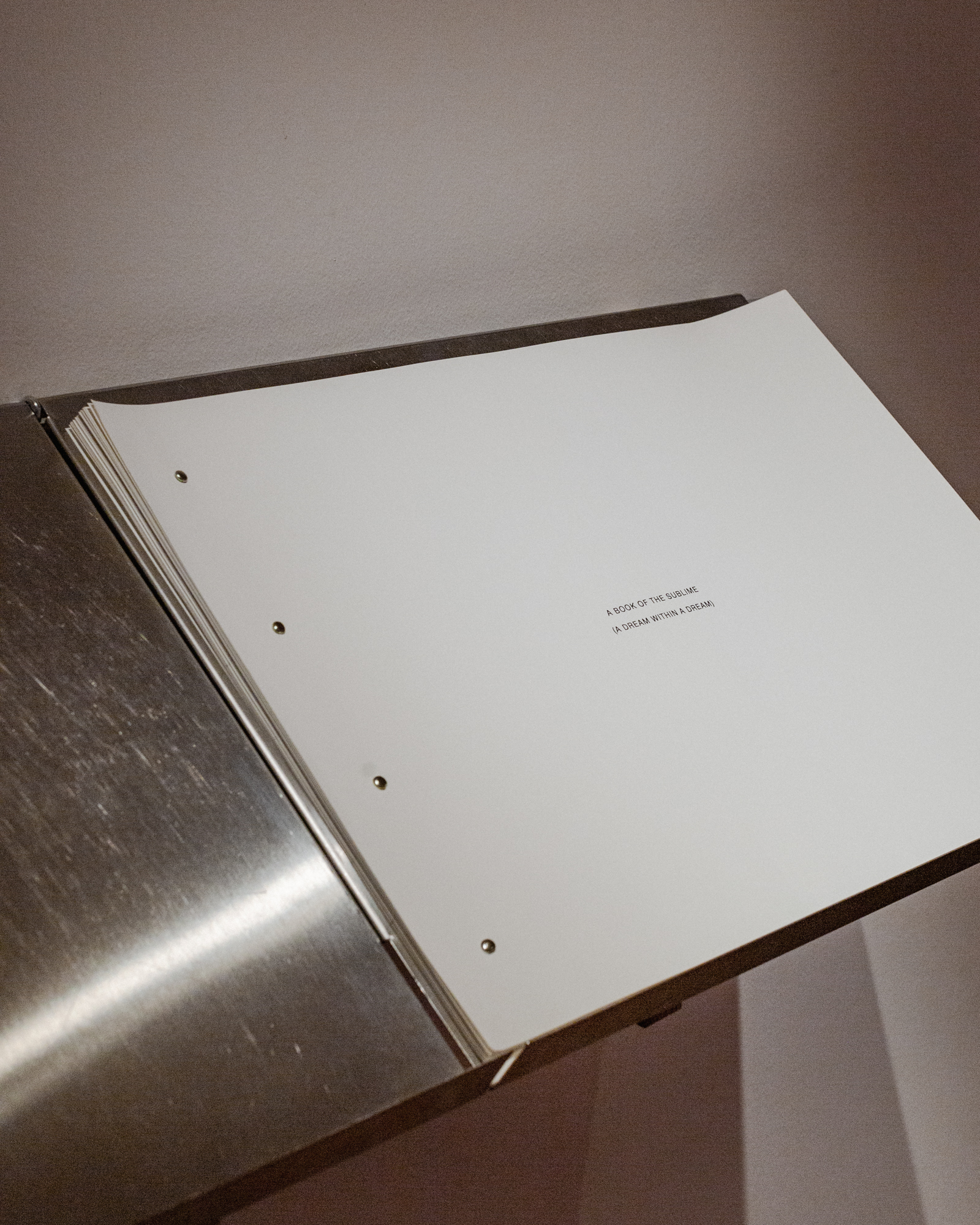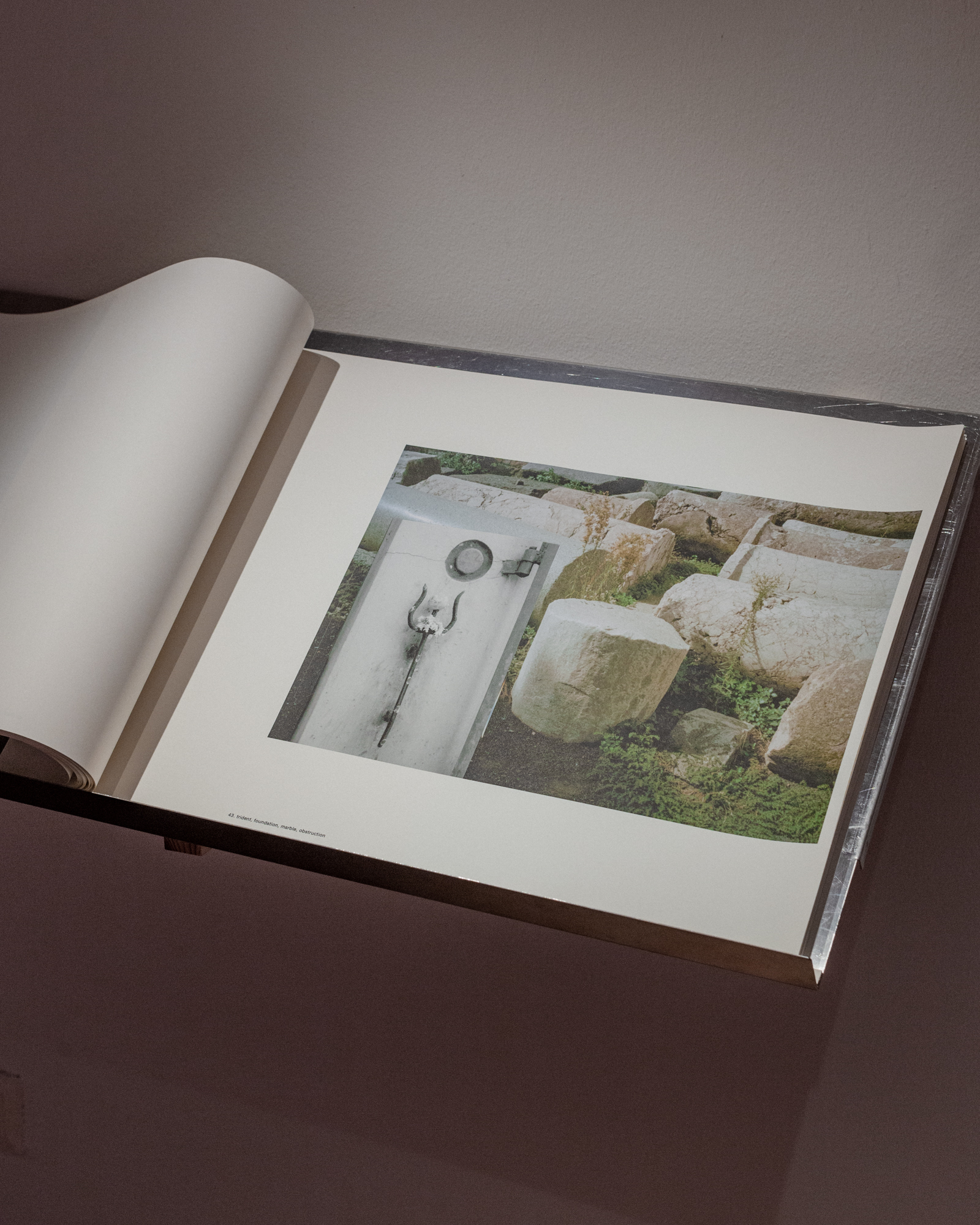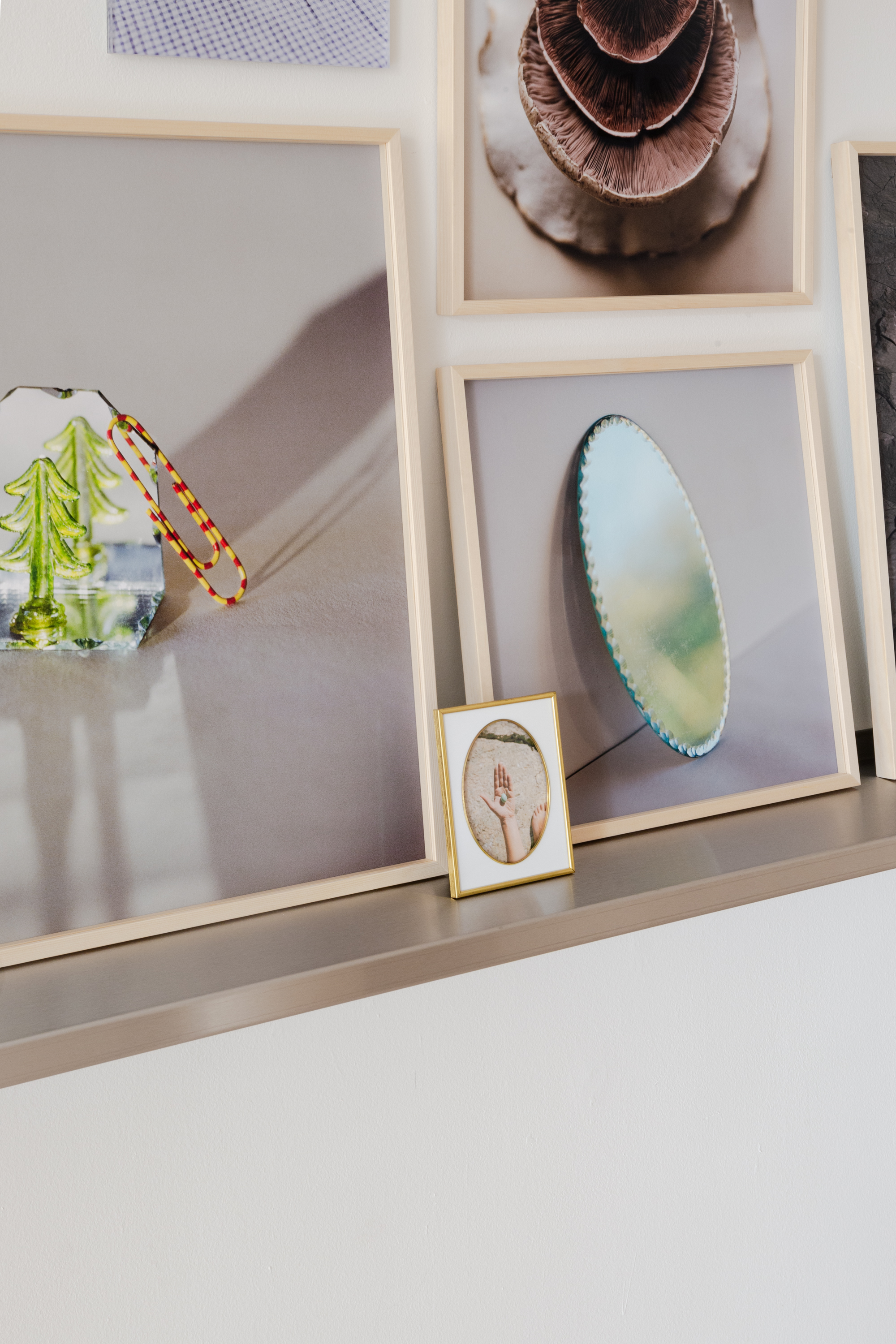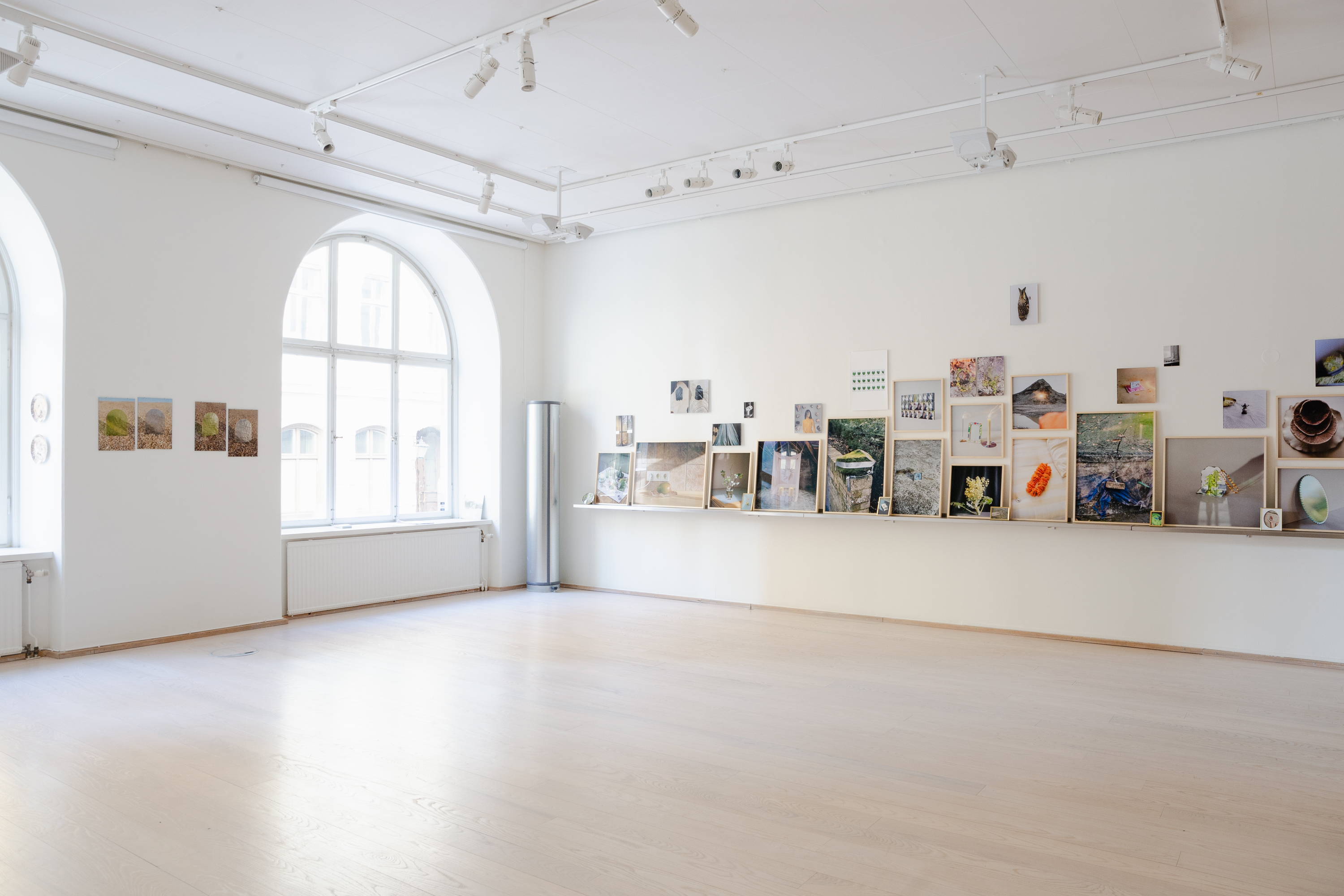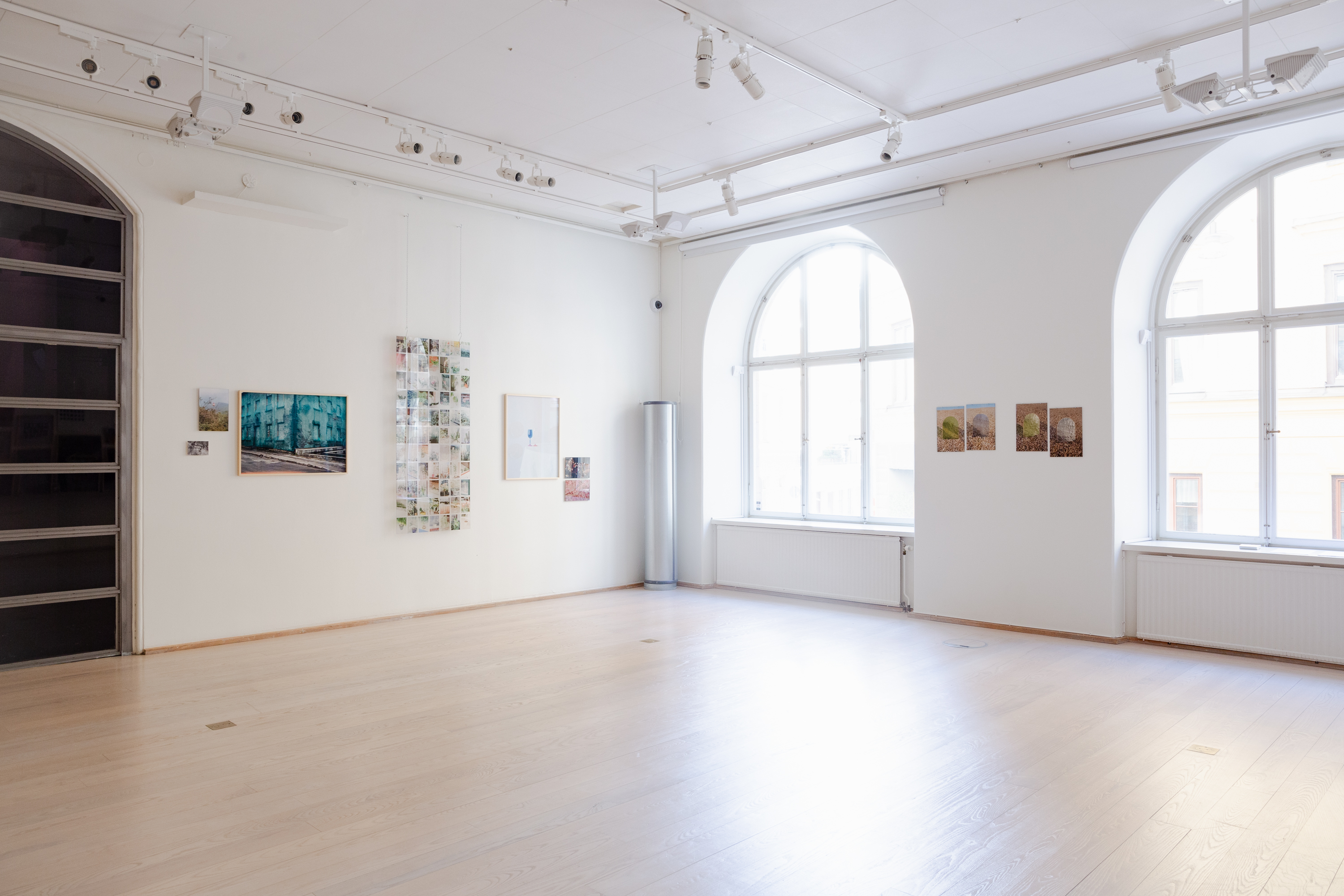Altar depicts a playful search for sacredness in the photographic image; in its subject, its reproduction, and its potential aura. The body of images featured in the exhibition is a chronological extract from the artist’s personal process of enquiry, creating a sanctuary in honour of cycles of regeneration and decay. The exploration encompassed within each work is rooted in notions of duality, the sublime, studies on transience, and the auspiciousness of matter. In addition to an abundant miscellany of photographs, the pieces include spreads of a book, an ornamented window, china plates, a woven tapestry, and a string of prayer flags. The very tactile objects aim to present open questions on the discord between the holiness and insignificance of images, literally and allegorically weaving together a web of associations, without aspiring to define any answers. Just as a photograph may eclipse mere representation, so might the physical form generate space for the contemplation of something metaphysical.
Works of art have, for the majority of human history, been objects of worship and mediums for ritual, the creative process itself also having been seen as an act of devotion. Ritual was once considered the main basis for the value imposed on any given art piece, its essence and function transcending its form and surface. Whether in the realm of religion or mysticism, these material items have predominantly been paintings, sculptures, papers and textiles, and even entire buildings, sanctified in various ways. Can a photograph be bestowed with the same kind of significance and veneration? Through a lens of quantum physics, we find that subatomic particles aren’t all too different from photons, relating matter to light; an electron can assume the form of not only a particle, but also a wave, like a blurry cloud of energy (Michael Talbot, 1996). What makes a particular cluster of molecules more exceptional than another? According to the holographic universe theory, the minute particles that comprise the entire material world are infinitely interconnected. How is it that we appoint sacredness only to select material occurrences? Do we find auspiciousness even in ourselves, in the bodies we inhabit, assuming that we trace it in anything at all?
Despite a general desacralisation characteristic to our day, private sanctuaries of sacredness subsist in our altars; in collections of found, obtained and received amulets and treasures. Altars of all sorts, like cornerstones of our material lives, hold heightened aesthetic value. Even in the domestic arena, an altar is an accumulation of aesthetic crescendo, whether intentional or accidental. These installations are built out of fragments of what we consider benevolent, giving our most intimate beliefs visual representation. What if we beheld that same sanctity in a creation which is already installed in our environment, in, coincidentally, the most breathtakingly beautiful form? The creation of artwork, and the placement of artworks in altars, is simultaneously a most noble deed of elevating the mundane, as it is a naive gesture of inserting a supernatural significance into the manmade. Ultimately projecting our Self, artwork mirrors our psyche. A photograph is like an optical manifestation of something infinite. An altar and an image alike are conscious or subconscious symbolical compositions, the image-making process itself also being infused with protocol. Is it thus a vehicle for worship, or do we worship the photograph?
Installation photographs 1, 3, & 4 by Milla Talassalo
![]()
![]()
![]()
![]()
![]()
![]()
![]()
![]()
![]()
![]()
![]()
![]()
![]()
![]()

